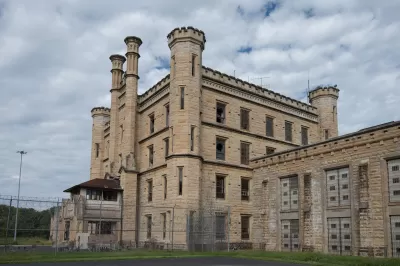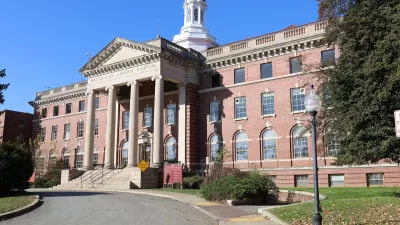Redeveloping closed correctional facilities in ways that foster just and thriving communities is a growing trend across the United States.

Everyone’s been talking about adaptive reuse of office buildings in the wake of record office vacancies following the pandemic. But that isn’t the only type of vacancy on the rise, according to an article from the Vera Institute of Justice. Jail and prison closures — driven by a steady decline in the United States correctional population and a glut of closed facilities — have increased since 2000.
The trend presents “an opportunity to reallocate energy, funds, space, and personnel toward collectively beneficial enterprises that help foster thriving and just communities,” writes Elizabeth Allen.
The article outlines and offers real-life examples of ways former correctional institutions can be reimagined to revitalize communities and economies, including:
- Housing
- Industry and commerce
- Agriculture, parks, and recreation
- Social and community services
- Renewable energy microgrids
“Done thoughtfully, redevelopment can bring community renewal,” Allen writes. Reuse of former jails and prisons can result in new businesses and jobs to foster local economies. “Former facilities, too, can be restored for reconciliation and reparation—as commemorative, educational sites or ones addressing the root causes of criminal legal system involvement” and to promote racial, social, and cultural justice.
FULL STORY: How to Redevelop Former Jails and Prisons for the Collective Good

Planetizen Federal Action Tracker
A weekly monitor of how Trump’s orders and actions are impacting planners and planning in America.

Maui's Vacation Rental Debate Turns Ugly
Verbal attacks, misinformation campaigns and fistfights plague a high-stakes debate to convert thousands of vacation rentals into long-term housing.

San Francisco Suspends Traffic Calming Amidst Record Deaths
Citing “a challenging fiscal landscape,” the city will cease the program on the heels of 42 traffic deaths, including 24 pedestrians.

Amtrak Rolls Out New Orleans to Alabama “Mardi Gras” Train
The new service will operate morning and evening departures between Mobile and New Orleans.

The Subversive Car-Free Guide to Trump's Great American Road Trip
Car-free ways to access Chicagoland’s best tourist attractions.

San Antonio and Austin are Fusing Into one Massive Megaregion
The region spanning the two central Texas cities is growing fast, posing challenges for local infrastructure and water supplies.
Urban Design for Planners 1: Software Tools
This six-course series explores essential urban design concepts using open source software and equips planners with the tools they need to participate fully in the urban design process.
Planning for Universal Design
Learn the tools for implementing Universal Design in planning regulations.
Heyer Gruel & Associates PA
JM Goldson LLC
Custer County Colorado
City of Camden Redevelopment Agency
City of Astoria
Transportation Research & Education Center (TREC) at Portland State University
Jefferson Parish Government
Camden Redevelopment Agency
City of Claremont





























